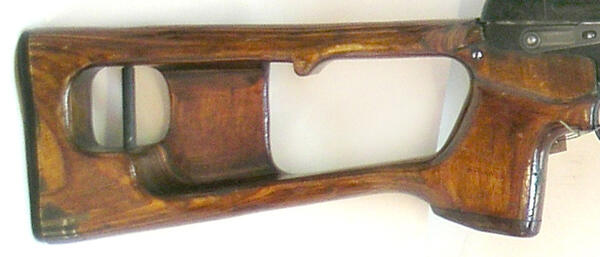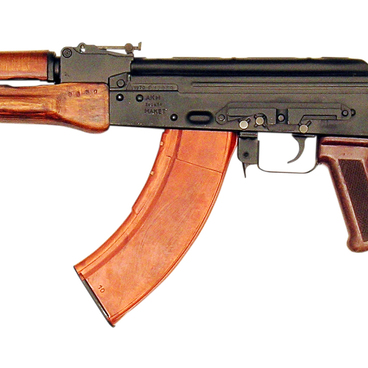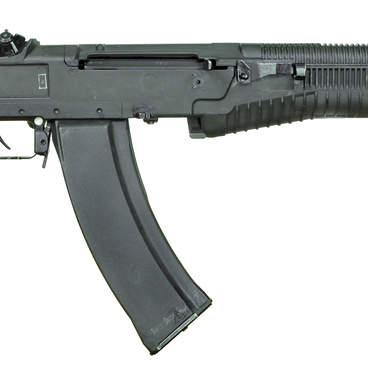Soviet gun designers started developing a sniper rifle in the 1920s. In 1928, arms factories launched the serial production of the first samples of telescopic sights designed specifically for Mosin’s 3-line rifle M1891. For the modified 3-line rifle model 1930, a special 4-power PE telescopic sight was developed based on the technology purchased in Germany.
Later, designers Sergey Simonov and Fyodor Tokarev both proposed their own versions of sniper rifles, but in 30 years, none of the proposed models was approved by the military. During both the Soviet-Finnish War and the Great Patriotic War, snipers used Mosin’s Infantry rifle which had a simple telescopic sight. Shooting accuracy depended on experience and expertise of the shooter, and not the rifle’s technical capabilities.
In 1958, Izhevsk gun designer Yevgeny Dragunov entered the competition to design a semi-automatic sniper rifle. He was a shooting sports instructor and received the “Voroshilov Sharpshooter” badge of the second degree even before he was drafted into the army. Besides being able to shoot accurately from small and combat rifles, a shooter had to be able to determine the distance at sight within 1,500 meters and know the rules of camouflage. During the Great Patriotic War, Dragunov was a senior armorer at the Far Eastern Artillery School. He began working on the improvement of the adopted sniper rifle in 1948, 10 years before the competition.
Dragunov’s rivals were experienced designers Sergey Simonov and Alexander Konstantinov. But it was Dragunov’s sample that successfully passed all the tests. On July 3, 1963, his sniper rifle with the PSO-1 telescopic sight was adopted into service by the Soviet Army under the name SVD.
Dragunov’s sniper rifle is semi-automatic: after firing, the bolt carrier returns to the forward position, the bolt pushes a new cartridge from the magazine into the chamber and closes the barrel bore, while the trigger is automatically cocked. This gives an advantage to the sniper: where a rifle with manual reloading would give one shot, the SVD is able to shoot twice.
The rifle’s range of fire with a night sight is 300 meters, with an open sight —800 meters, with a telescopic sight — 1.3 kilometers. In 1985, in Afghanistan, the sniper of the 345th Guards paratrooper regiment Vladimir Ilyin hit an enemy from a distance of 1,350 meters. It is considered an absolute record for all 7.62-millimeter rifles.
Later, designers Sergey Simonov and Fyodor Tokarev both proposed their own versions of sniper rifles, but in 30 years, none of the proposed models was approved by the military. During both the Soviet-Finnish War and the Great Patriotic War, snipers used Mosin’s Infantry rifle which had a simple telescopic sight. Shooting accuracy depended on experience and expertise of the shooter, and not the rifle’s technical capabilities.
In 1958, Izhevsk gun designer Yevgeny Dragunov entered the competition to design a semi-automatic sniper rifle. He was a shooting sports instructor and received the “Voroshilov Sharpshooter” badge of the second degree even before he was drafted into the army. Besides being able to shoot accurately from small and combat rifles, a shooter had to be able to determine the distance at sight within 1,500 meters and know the rules of camouflage. During the Great Patriotic War, Dragunov was a senior armorer at the Far Eastern Artillery School. He began working on the improvement of the adopted sniper rifle in 1948, 10 years before the competition.
Dragunov’s rivals were experienced designers Sergey Simonov and Alexander Konstantinov. But it was Dragunov’s sample that successfully passed all the tests. On July 3, 1963, his sniper rifle with the PSO-1 telescopic sight was adopted into service by the Soviet Army under the name SVD.
Dragunov’s sniper rifle is semi-automatic: after firing, the bolt carrier returns to the forward position, the bolt pushes a new cartridge from the magazine into the chamber and closes the barrel bore, while the trigger is automatically cocked. This gives an advantage to the sniper: where a rifle with manual reloading would give one shot, the SVD is able to shoot twice.
The rifle’s range of fire with a night sight is 300 meters, with an open sight —800 meters, with a telescopic sight — 1.3 kilometers. In 1985, in Afghanistan, the sniper of the 345th Guards paratrooper regiment Vladimir Ilyin hit an enemy from a distance of 1,350 meters. It is considered an absolute record for all 7.62-millimeter rifles.


